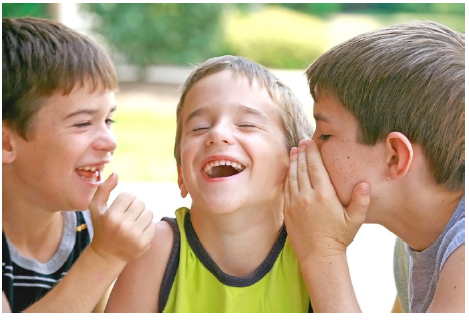Oral Language Development
The development of infants’ oral language begins as caregivers socially interact with them (Honig, 2007). Oral language includes speaking and listening. Young children learn about their world as they communicate with others. Oral language skills are an important predictor of later language and literacy development (NELP, 2010).
Children begin to develop language as they babble and coo. Soon they are repeating sounds such as da da and then they speak their first word. One-word utterances lead to multiple words, followed by more complex sentences. Oral language is a process that is developed by using spoken language.
Language greatly increases during the preschool years. Starting at the age of 3 years old, children should be learning at least 2,500 new words each year (Roskos, Tabors, & Lenhart, 2004). Therefore, they need to be exposed to new words everyday.
Oral language is used for many purposes. Children use language as they engage in social exchanges and playful encounters. Language is used to make requests, share information, and ask and answer questions. Thus, children’s comprehension of language increases during daily interactions.
Children’s vocabulary expands as they share their experiences. One powerful way for children to increase their oral language is through hearing the spoken word through meaningful conversations. The more words children hear and comprehend, the faster their language develops (Honig, 2007).

Ways to Promote Language Development
Infants and toddlers learn language as adults talk, recite nursery rhymes, tell stories and sing songs. Adults should imitate the sounds infants say and engage in two-way conversations by taking turns listening and speaking (Morrow, 2012).
Infants and toddlers benefit when caregivers describe feeding, toileting and napping routines. “It is time for lunch. I see that you are telling me that you are hungry. I am going to carry you over to your high chair. Then I am going to bring you some bread, cheese, and a banana to eat.”
As teachers and parents playfully and purposefully interact with children throughout the day, they promote language development. For example, caregivers can use communication props such as toy telephones and puppets to expand conversations. They can read frequently and expressively. These activities will facilitate infants and toddlers language development.
Give children opportunities to talk. Ask open-ended questions to promote discussion. Actively listen to children and then clarify and extend the conversation.
Promote speaking and listening throughout the day. As children arrive, model greetings and appropriate social exchanges. During play, scaffold children’s language by asking purposeful questions, embedding new words into conversations, and defining new and challenging words.
Read often, even to very young children. Children develop comprehension skills during read aloud, especially if they are involved in exploring and discussing the story and illustrations.
Be a language model and describe children’s actions. During outside time, give children opportunities to learn rules and problem-solve as they play new games.
Promote peer-to-peer conversations and make home-school connections during meals and snacks. Encourage children to take an active role in conversations by sharing their thoughts and ideas with others.
Sing songs together. Children enjoy music. As they listen and sing the words in songs they are developing their receptive and expressive language skills.
Use show-and-tell to build oral language skills. With small groups of children, teach them how to share the “who, what, where, when and why” of their object. Children can learn to point and describe the main features of their item. This will promote a more focused showing and telling and build oral language skills.
Retell stories. Storytelling can teach children many language skills, including oral language comprehension. Hearing a story requires children to be active listeners. Teachers can ask children to make predictions and answer meaningful questions. After telling a story, encourage children to retell the story.
Children develop expressive language as they retell a story. As they recount the details of a story, the complexity of their vocabulary and spoken word increases. Retelling stories also helps improve a child’s comprehension of a story.
Children can retell stories in many different ways. They can act out a story or use props, flannel boards or sequence cards to tell the tale.
- Select books that have topics of high interest.
- Use props. Have the children help create the props for stories’ retell.
- Work with small groups of children.
- Retell the story multiple times.
- Support and demonstrate as needed.
References
- Consortium on Reaching Excellence in Education, Inc. (2012). Sounds Beginnings: A workshop on early literacy. Instructors guide. Berkeley, CA.: CORE.
- Honig, A. S. (2007). Oral language development. Early Child Development and Care, 177(6-7), 581-613.
- Morrow, L. M. (2012). Literacy development in the early years. Boston, MA: Pearson Education.
- Eunice Kennedy Shriver National Institute of Child Health and Human Development, NIH, DHHS. (2010). Developing Early Literacy: Report of the National Early Literacy Panel (NELP). Washington, DC: U.S. Government Printing Office.
- Roskos, K. A., Tabors, P. O., & Lenhart, L. A. (2004). Oral language and early literacy in preschool. Newark, DE: International Reading Association.
Byington, T.
2013,
Oral Language Development,
Extension | University of Nevada, Reno, FS-13-42


